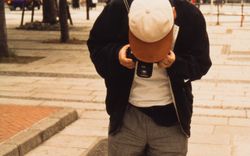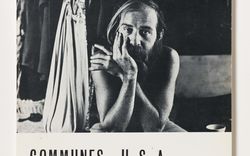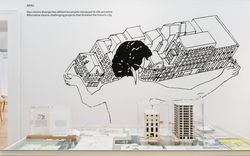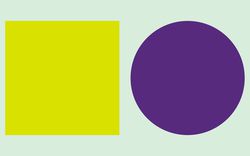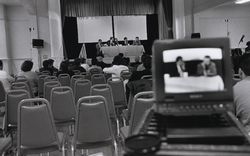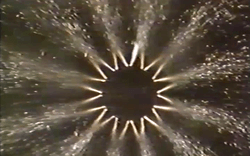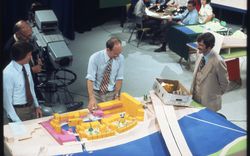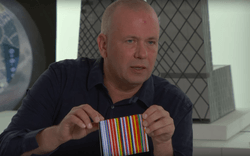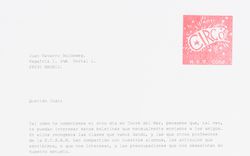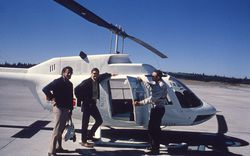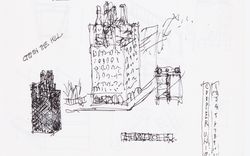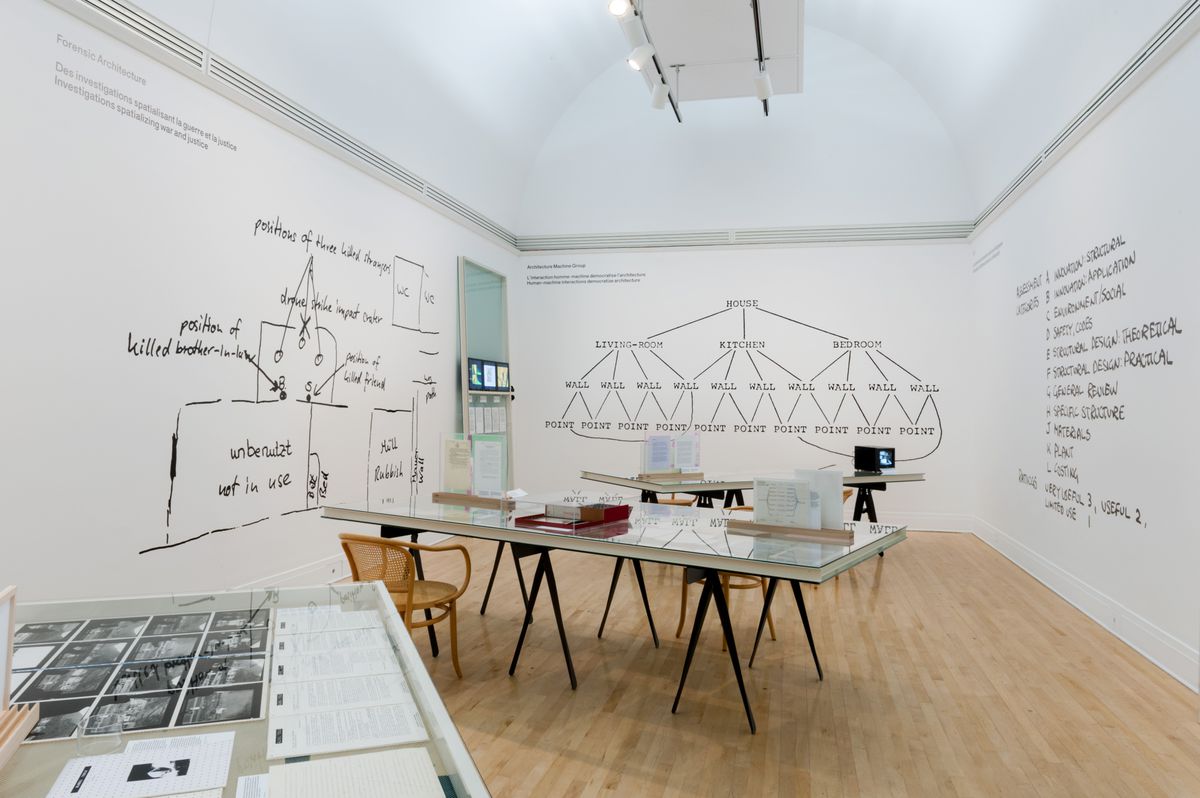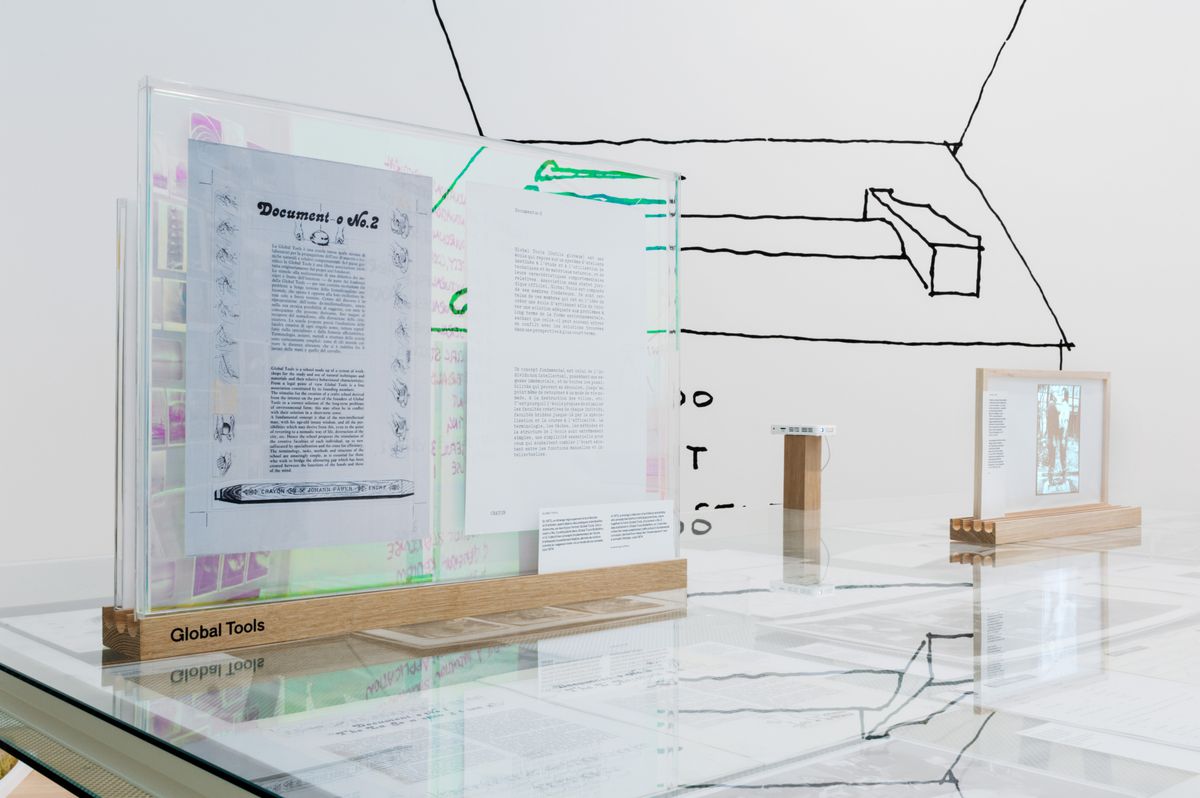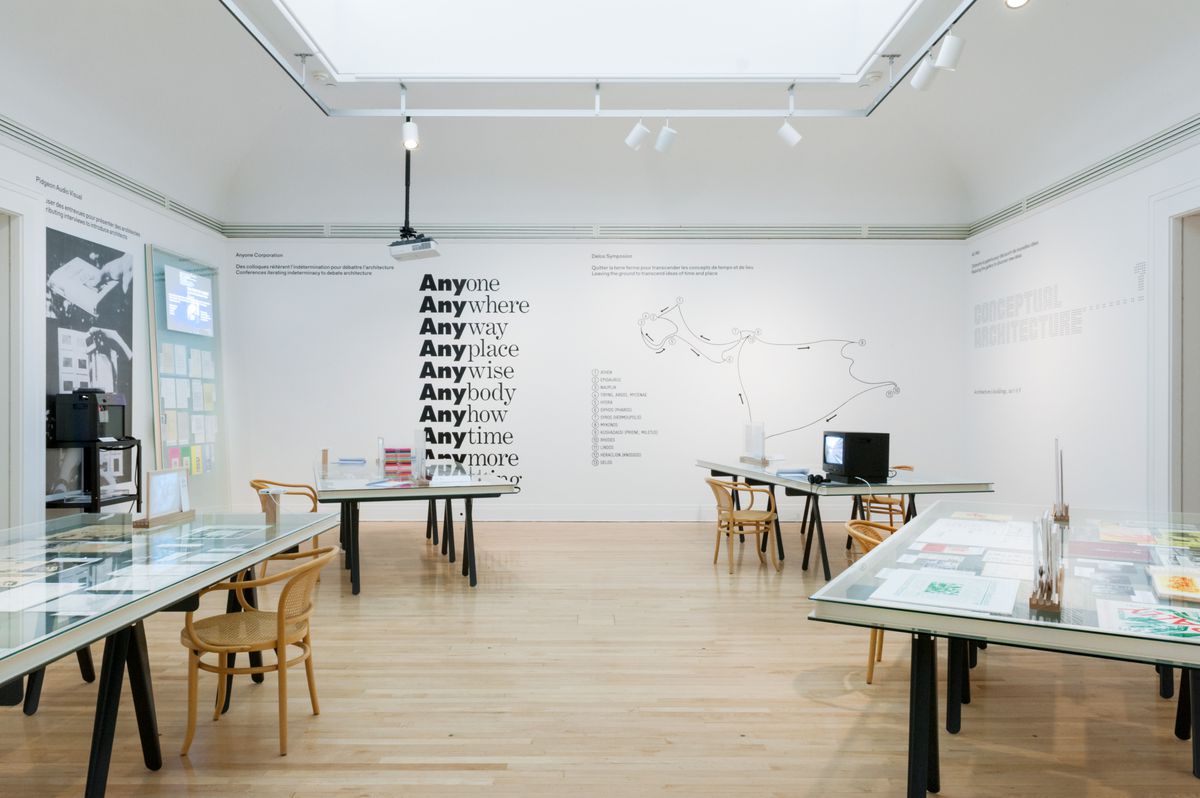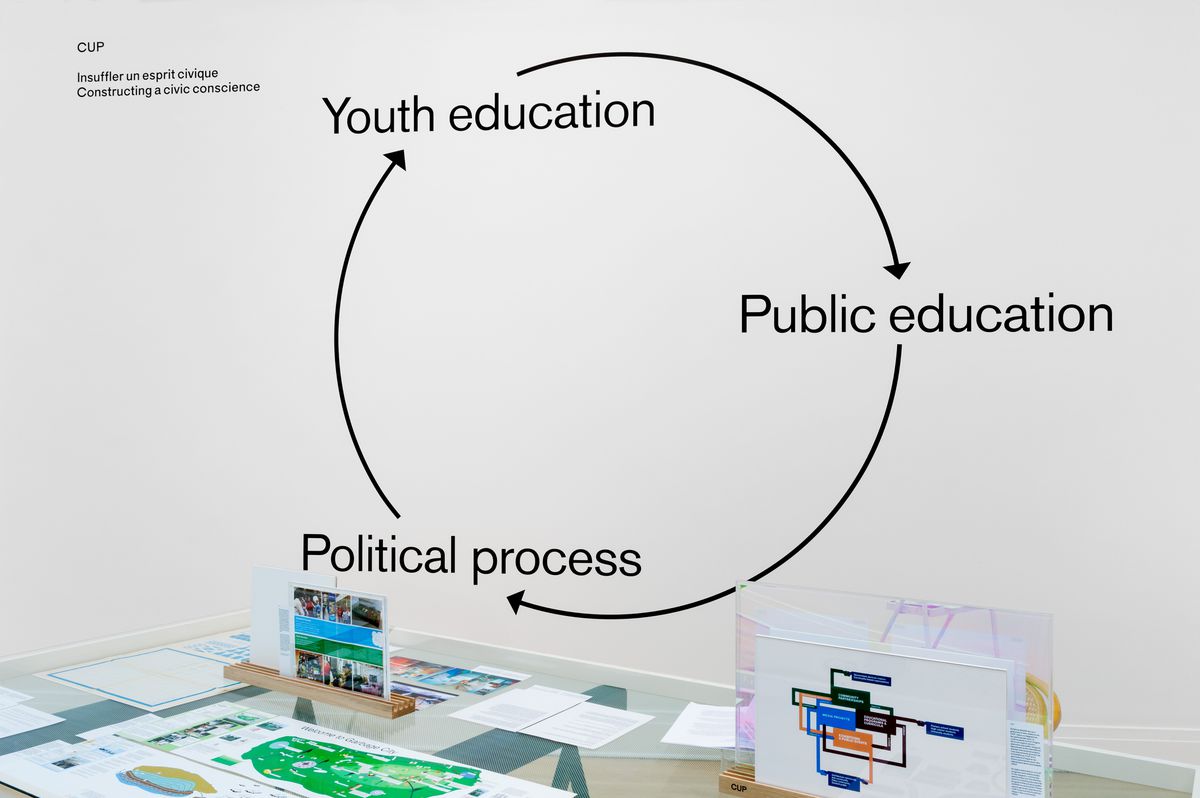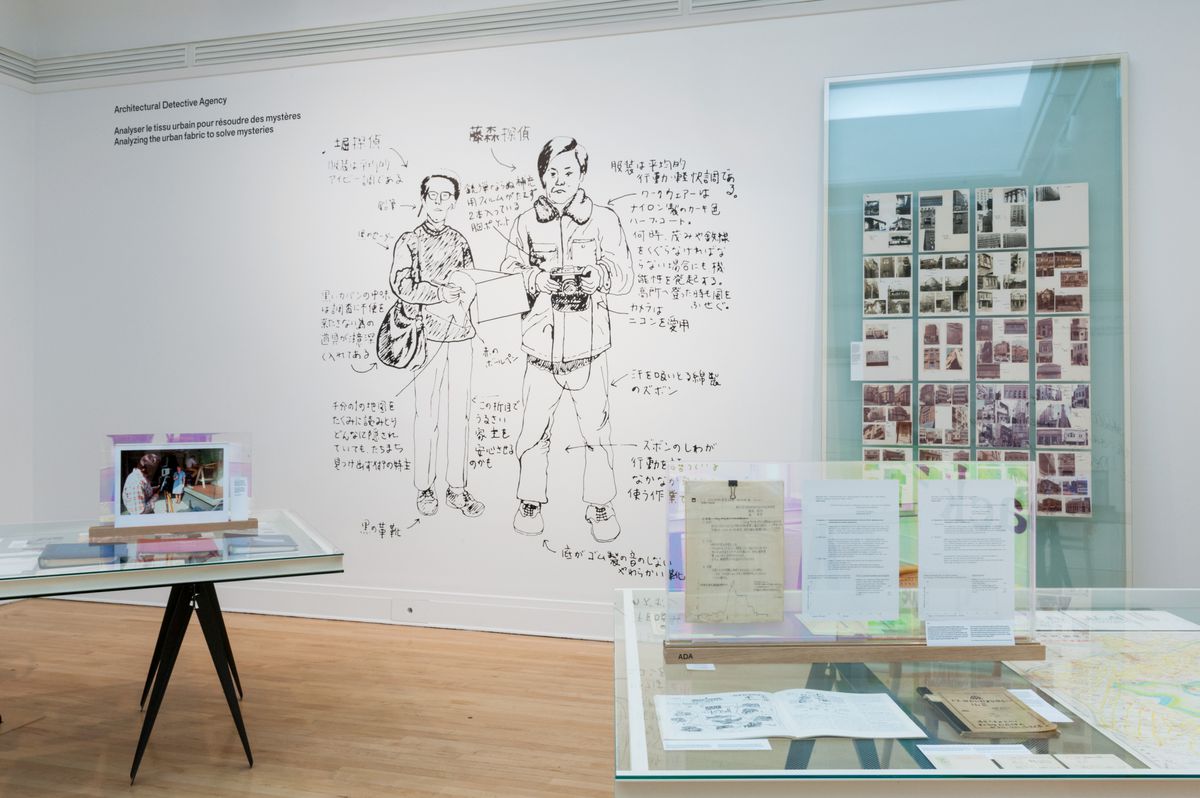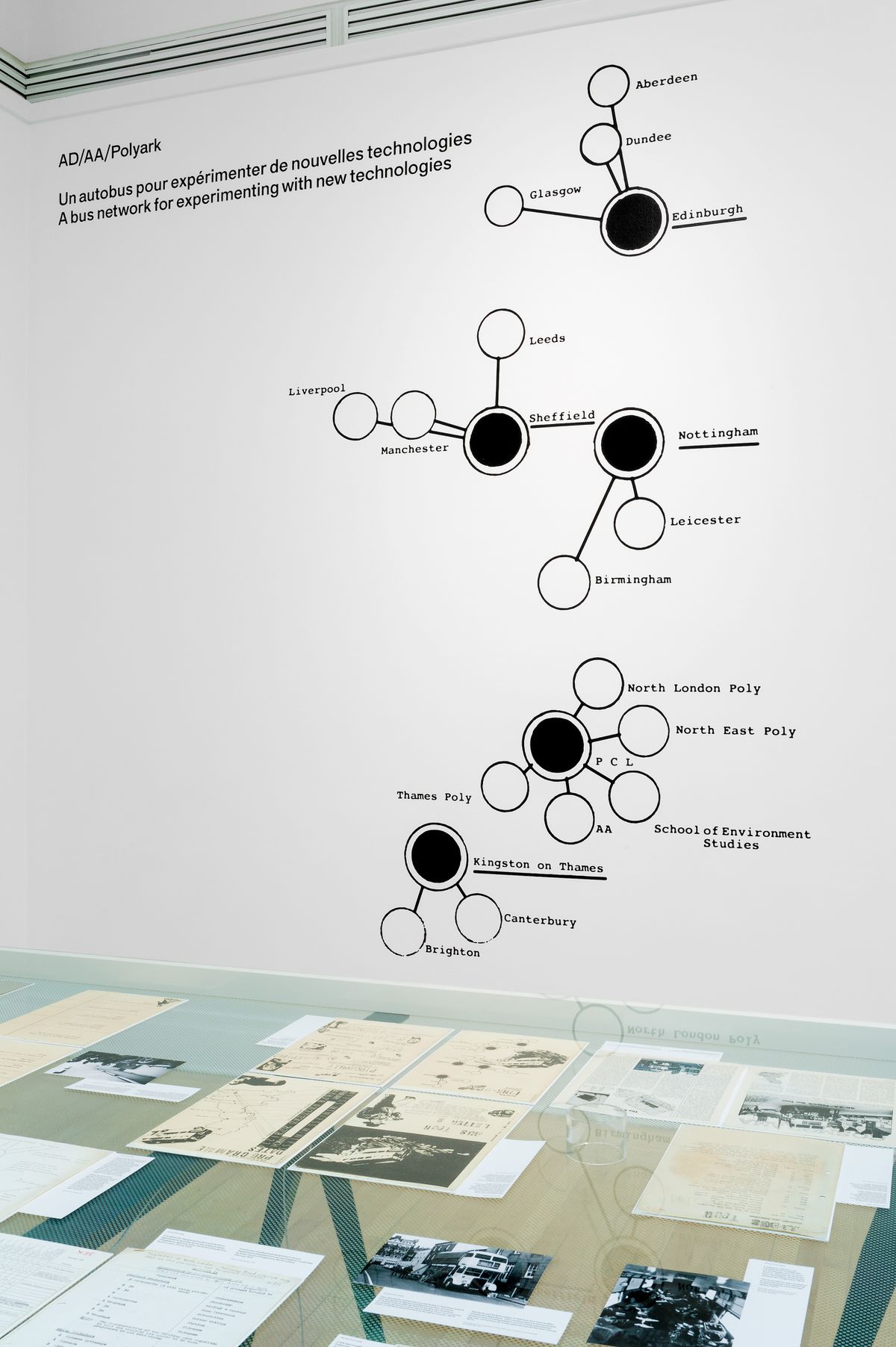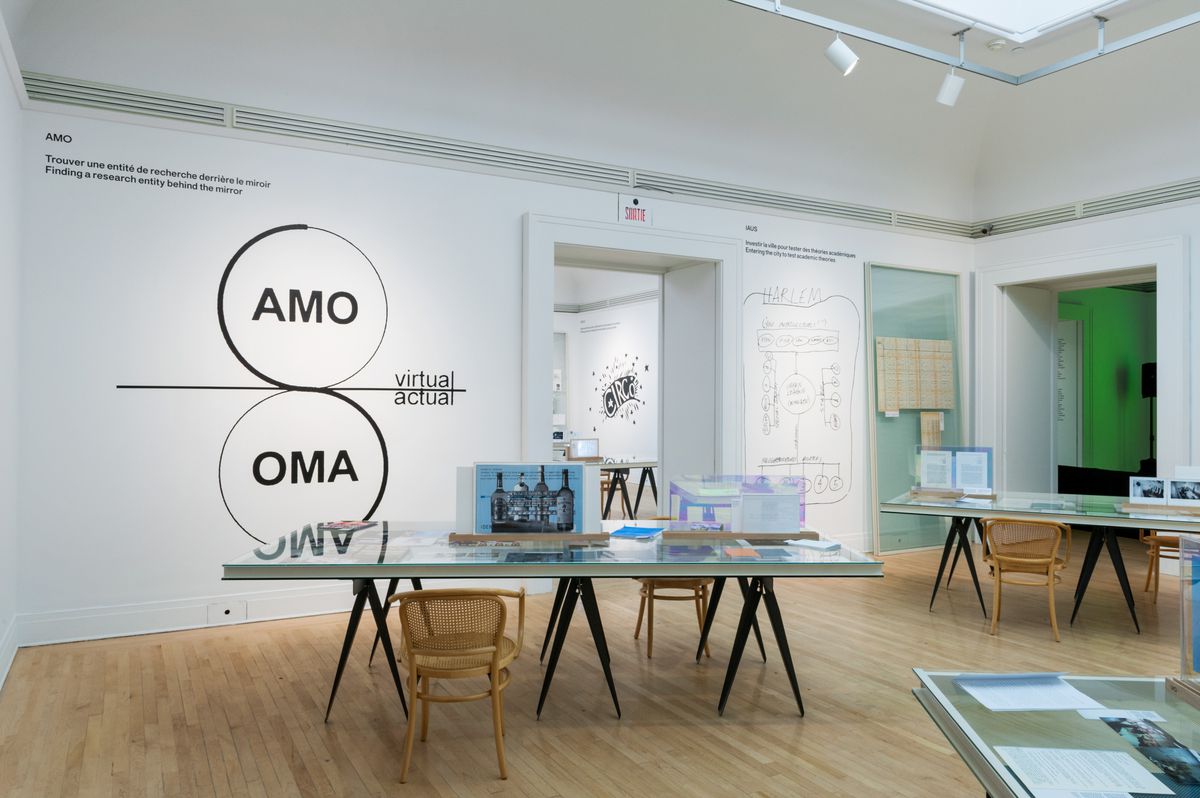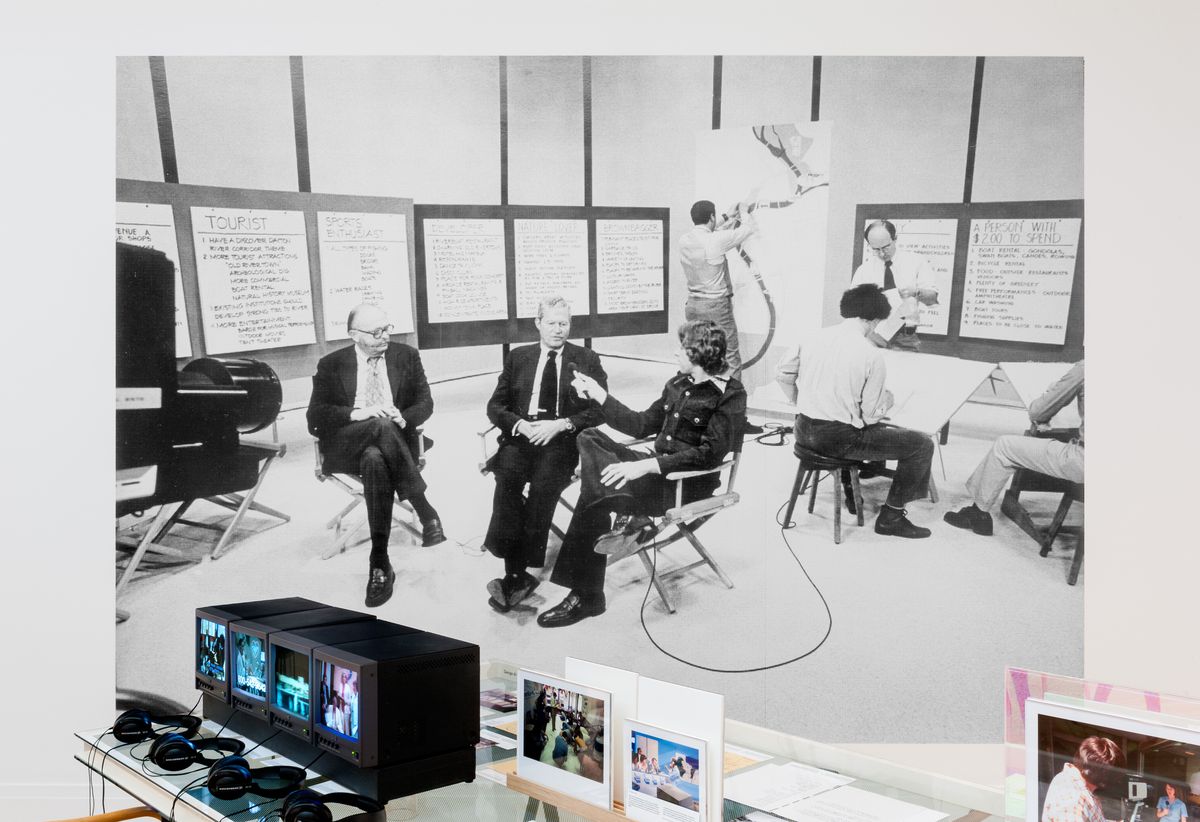Another Way of Building Architecture
Text by Giovanna Borasi
For as long as architecture has been reduced to a service to society or an “industry” whose ultimate goal is only to build, there have been others who imagine it instead as a field of intellectual research: energetic, critical, and radical.
But how can we produce or maintain this position?
In the history of architecture, especially since the 1960s, it is possible to identify a range of experiences that took this position and pushed beyond traditional architectural practice, the established domains of academia, and the usual dynamics of editorial and institutional activities. This proliferation of experiments represents the work of architects who ventured to creatively and thoroughly rethink every aspect of the profession. They critically analyzed their roles and challenged the precepts and ultimate goals of the discipline.
Moved by a desire to contribute more substantially and more actively to the construction of a cultural agenda (“Trying to change the notion of architecture as business”;1 “I’m preparing tools”2), they shared a will for a closer connection to the spirit of their time: to understand it better and to offer it more appropriate suggestions, or even to anticipate future questions. So they searched for different operating models, introduced new concepts, and began to work with unusual tools. The result is an ample array of possibilities.
Observing and analyzing these experiences can supply us with an operating manual for critically engaging with the urgent issues of our time, an unusual and hopefully compelling collection that contains many methods, tools, and ideas for new ways of defining architecture. Together, these experiments point beyond what architecture is toward what architecture could be—or what it already is, if we would recognize it.
Read more
Here architecture is no longer understood as a practice that inevitably brings about the construction of an artifact, but as a way of thinking, observing, and analyzing the present and the society in which we operate; of identifying and asking questions while marking a new territory on which to act; of looking for or inventing suitable tools; and, finally, of responding generously and concisely.
These investigative models represent a new approach to architecture relying equally on their proposed themes and on their sets of operating strategies, working methods, organizational structures, and financial models. Reading the traces of these different creative processes—budgets, tactics for accessing resources, communication plans, meeting minutes, project drafts, mission statements, correspondence, unpublished studies—is more relevant here than studying the final products.
The Other Architect, like the case studies it examines, is also a research project, concerned in its own way with contributing a new reflection on the role of the architect and inspiring and proposing unexpected ways of practising architecture today. Selecting and analyzing the documents produced as part of these experiments, reading the ideas they express in the first person—the ambitions they reflect, and the research and the problems they pose—is a way of responding to the question of how we can position architecture as an original site for the production of ideas.
The collaborative player
A theme that emerges from close analysis of these cases is authorship: who can be considered the conductor of these experiments? In contrast to the typical condition of the architectural firm with the architect at the centre of every decision, the groups selected here opted for new models based on collaboration and dialogue. They explored possible forms between collectives, collaborative groups, partnerships, fellowships, and networks. These modalities are more open and pluralistic—often, they are explicitly multidisciplinary—and they are better suited to engaging with new fields of investigation.
The attributes that we can identify in the names of some of these entities, words like “laboratory,” “institute,” “agency,” “group,” and “unit,” further suggest a search for other institutional forms than those of an architecture firm or an architecture school. They highlight a will to seek out different operating models, structures based on the fluidity of roles, and modes of exchange among diverse subjects. They are, in fact, forms and expressions of a collective way of speaking based on interdisciplinary exchange and reconfigurable networks in which it is normal to intentionally and productively confuse roles.
The experience of the Urban Innovations Group (UIG)—created in 1971 as a professional studio inside the academic world by Harvey Perloff, Dean of UCLA’s Graduate School of Architecture and Urban Planning—offers a new model for the investigation of an alternative relationship between architectural practice and architectural education. Students and professors worked together on problems related to realizing built projects; UIG became a new way of “doing school” and “doing work,” in which study, work, and research happened at the same time. The roles can even be reversed: the students work and the professors study (“New forms of practical training”1).
Conditions were similar at the International Laboratory of Architecture and Urban Design (ILAUD), founded by Giancarlo De Carlo in Urbino, Italy, in 1974, where students and teachers from universities around the world engaged with urban issues in a collective manner. ILAUD was intentionally designed as an international and heterogeneous network (“Why ‘international’?”2); participants came from different universities and, therefore, from different schools of thought. This combination of specific backgrounds was fundamental for productive exchange and generating new topics for research. ILAUD brought together the designs and reflections of students with those of teachers whose theoretical and formal research could be quite dissimilar from one another’s—for example, De Carlo, Charles Moore, Peter Smithson, and Donlyn Lyndon. This confusion of roles and emphasis on collective debate can generate additional perspectives into problems while experimenting simultaneously with the practice and study of architecture. But above all, the rethinking of structures and procedures and the mixing of diverse environments—practice, school, and research—produces a new result for each one.
This can also be perceived in the case of the Institute for Architecture and Urban Studies (IAUS), directed by Peter Eisenman in New York from 1967 to 1985 and a place where research, teaching, and “doing” were combined in a single process. Here too, interns, fellows, professors, and architects worked together to investigate urban issues (“There is no fixed curriculum”3) and produce pluripotent research that could become publications, subjects for exhibitions, or opportunities to develop design proposals. IAUS attempted to integrate the intellectual architect-researcher with the architect-designer—just as it tried to integrate the practice of architecture with its urban and social context and its educational role (“to unite the theoretical realm of higher education with the pragmatic world of the planning agency”4).
The examples of UIG, ILAUD, and IAUS insist on the possibility of an approach that brings practice together with education and theoretical analysis while using architecture as a tool to examine the city. For all three groups, the emphasis was on the urban as a way of reading and reflecting on culture and society. After considering how to treat these apparently distinct spheres, they proposed to rearrange themselves into institutional forms that would enable a new range of experiences: one would allow a dynamic similar to that of a clinic in a medical school, the others to that of a laboratory or research institute.
At the same time, these experiments exemplify the ideas that architecture is not a static form of knowledge and that the architect must be involved in a continual discussion, a testing of their thinking on both practical and theoretical levels. The experience of Global Tools, a group of radical Italians, echoes this position. The laboratories they conducted over a brief period between 1973 and 1974 were meant primarily to serve the group as a kind of self-directed learning around a series of shared themes, such as the body, communication, or the idea of survival (“Here are some of the principal activities”5). Once again, we find the idea of collective learning.
-
Report by Harvey Perloff and Ralph Iredale to Charles E. Young, 15 September 1972. Excerpt reprinted in The Other Architect, 2–5. ↩
-
Letter from Giancarlo De Carlo to Peter Smithson, 12 December 1977, updated 5 February 1981. Reprinted in The Other Architect, 24–27. ↩
-
Document explaining the planned organization of IAUS activities, c. 1972. Excerpt reprinted in The Other Architect, 66–67. ↩
-
Document outlining the IAUS mandate, undated. Excerpt reprinted in The Other Architect, 64. ↩
-
Layout for a page from the no. 0 bulletin prepared by Global Tools, June 1974. Reprinted in The Other Architect, 279. ↩
The unexplored role
The specific and strategic names that different groups give themselves reveal something about their approaches; when they are borrowed from other professions, these terms tend to emphasize new ways of working inside the architectural field. By inventing a new profile for themselves, architects propose a different pact with society. These range from a “detective” who systematically and directly analyzes the urban fabric to a “forensic expert” who investigates and expresses issues of public security in a transparent and scientific manner and a “television host” who involves the public in an urban project. This exploration of different roles and identification with another figure than that of the traditional architect—and consequently with different modes of operation and production—allow for the establishment of new methods, logics, and tools and, therefore, different results. Architecture transforms into a territory for action where the architect can operate within society by simultaneously revealing not only the quality and complexity of an architectural problem, but also the potency that arises in dealing with it from an unexpected angle.
Entering and drawing from other fields can make an architectural subject more comprehensible to the public because the tools used and the conception of the architect’s role are no longer confined to tradition. In 1970s Tokyo, the young architect and historian Terunobu Fujimori and his Architectural Detective Agency and ROJO Society colleagues even became the heroes of a manga. Also in the 1970s, Chad Floyd, an architect at Moore Grover Harper, took on the role of anchorman for television “Design-A-Thons,” pioneering interactive experiments conducted in American cities like Dayton, Ohio, Roanoke, Virginia, and Watkins Glen, New York, which used live television as a technique of urban design. Viewers could call in during the broadcasts and contribute to a conversation about the future of their community.
In these cases, the priorities of architecture move closer to issues of public interest, and, at the same time, the architect shares tools and methodologies with those for whom the project is intended (“A sense of public confidence in the plan”1).
-
Memo prepared by Moore Grover Harper explaining an exhibition at Cornell University on the Riverdesign Dayton Design-A-Thon, c. 1979. Reprinted in The Other Architect, 193. ↩
The apparently tangential research topic
In their choices of subject and modes of operation, these new directions become opportunities to radically rethink what architecture is. Research is not just integral to the project; it often becomes the project, its primary and central scope of activity. Research subjects that appear to be peripheral or tangential to the discipline have the potential, in these new forms, to generate unanticipated and refreshing ideas.
The research trip that Liselotte and Oswald Mathias Ungers took at the beginning of the 1970s to look for communes in the United States became Kommunen in der Neuen Welt, an informative book that brilliantly combined sociological research with knowledge of settlement patterns (based on the authors’ sum of specialized knowledge). The journey and the book it produced can be seen as tools for retracing a fundamental theme of architecture—utopian thinking—and its influence on the organization of a society, while simultaneously providing a possible model for connecting theoretical, multidisciplinary research with the reality of the built landscape and disseminating it to a general audience.
In 1968 the United Kingdom’s Ministry of Public Building and Works commissioned Cedric Price and Frank Newby to conduct research on lightweight and inflatable structures, which gave the architect and engineer a way of uniting their interests and expanding their knowledge that eventually became the Lightweight Enclosures Unit. Their systematic analysis contributed to another important topic of architectural investigation—modular, flexible construction—while considering its possible impact in social and economic terms in view of a wider and more democratic use of these structures.
Such contextual research underlines an attempt to question the nature of the typical relationship between the architect, the client, and the commission. The architect usually receives a problem to reflect on and to solve. Instead, in these cases the architects have commissioned a research project for themselves, or tried to use collaborations and research grants to advance a personal project, while avoiding purely formal investigation—thereby establishing agendas and priorities more broadly.
A new mandate
This radical rethinking of what architecture is and where it can act is also profoundly reflected in the mandates that these experiments gave themselves. In these groups’ initial declarations, we discover a wealth of ideas and unusual terms that define their forms, modes, and intents of exploration and design: AMO is an observation, UIG is a clinic, Art Net is a chatshop, ILAUD is a laboratory, IAUS is a halfway house, Global Tools is a crafts school, Lightweight Enclosures Unit is a bibliography, the Architecture Machine Group is an interface Forensic Architecture is an evidence agency, Take Part is a workshop, Kommunen in der Neuen Welt is a pilgrimage, the Architectural Detective Agency is an inventory, Design-A-Thon is a planning charrette, CUP is an urban educator, Corridart is a linear museum, ARAU is a resistance coalition, the Delos Symposion is a charter, AD / AA / Polyark is a bus tour, Anyone Corporation is a dialogue, Pidgeon Audio Visual is a lecture kit, and CIRCO is a thought exchange.
Read together, this is a stimulating and variegated vocabulary for describing a new way of conceiving and doing architecture. These terms were coined to describe a set of entities and institutions, but they also promise an unexpected role for the architect, often as an alternative or in contrast to the currently dominant model. The potential is clear: these groups and deconstructed institutions proposed to assume different responsibilities and undertake projects that architecture, in its traditional domain, would not approach. The sphere of architectural activity instantly expands.
At the same time, the decision to establish a precise agenda expressed through the exercise of self-definition and self-presentation and the identification of research subjects and methods adds a dimension to the process typically underlying an architectural project. These experiences can remind us that architecture has the capacity not only to resolve a given series of problems, to elaborate a program and determine its functional organization, but also—and more importantly—to pose a question at precisely the right moment, to offer clear direction or deep knowledge of an urgent issue, and to establish what requires attention in the “here and now.”
A healthy separation
Some of these initiatives were particularly effective because they began with a specific mandate in response to an open question or a dedication to explore a particular subject combined with a clarity of intent on one hand, and a simultaneous physical or intellectual separation from existing groups on the other—a combination that allowed for critical distance and productive friction.
AMO was born when the architectural firm OMA looked in the mirror at the end of the 1990s. Although they are part of the same “thing,” OMA and AMO are two distinct units within an already-articulated constellation. Characterized by certain “parallelness,” each entity clearly occupies a different sphere of action. Initially, these were defined by the separation between the “real” and the “virtual,” where real and virtual are understood not only as media but also in respect to the uncertainty of the context that they explore, or to the different intellectual dimensions involved (“In the virtual age…architectural thinking was a resource”1).
This separation or alterity offers multiple advantages, such as an efficacy of action and a focus on the result, as in a laboratory experiment. It also illustrates how the crafting of a dedicated unit can respond more precisely to an objective, and in a more agile way. It is almost as if these entities were compelling architectural projects in themselves, ready to respond to the relationship between program and context while simultaneously formulating new content.
At UCLA, to take another example, Perloff strongly argued for the functional independence of UIG, maintaining that although this new form of architectural practice was part of the university, it could only function properly if its office—and its organization—was physically separate and clearly distinct.
In the same way, collective initiatives like Global Tools were able to exist and to produce the unexpected because they were kept separate from the individual practices of their various radical components—which in this case included Superstudio, Archizoom, Ugo La Pietra, Gaetano Pesce, Gianni Pettena, Ettore Sottsass, U.F.O., Gruppo 9999, Remo Buti, Riccardo Dalisi, and Zziggurat. It seems to be that it is exactly this experience in a new context, detached from regular practices, that enables individual appropriation of what could be developed only collectively.
-
Chronicle of the Universal project prepared by Dan Wood, c. 2000. Excerpt reprinted in The Other Architect, 42–43. ↩
The designed context
Within a traditional system of institutional relations, it is difficult to work effectively at the margins of official environments, establish new formal relationships among involved parties, or propose experimental financial plans—all ways to shape new ideas and to create projects. In these experiments we observe an urgent desire to also plan the contexts in which these groups would operate, as though this first operation—asking the question of where to act—was essential to ensure the development of the project and its methods. The subject of their work is not only the topics to be researched and the ideas to be developed, but also where the working models will be used. The first action is to define the field.
IAUS was an independent research institute located in midtown Manhattan, though since its founding it maintained a strong relationship with a museum, the Museum of Modern Art—with which it also had economic, intellectual, curatorial, and research ties, particularly linked to the exhibitions of the Department of Architecture and Design—and a university, Cornell, with which it launched its first internship program. IAUS’s early research projects into Harlem and streets (“The street has become a gap”1) were commissioned by public agencies like the US Department of Housing and Urban Development, which asked IAUS to contribute its expertise in analyzing urban issues and to propose alternative models of development.
When Peter Cook opened Art Net in London in 1973, the gallery’s independence was guaranteed by Alistair McAlpine’s sponsorship. Cook put together an ambitious program of exhibitions and events with unexplored formats, like the “chatshop” or the conference marathon, and though Art Net shared some topics of interest with research conducted at the nearby Architectural Association and the Institute of Contemporary Arts, it cultivated its own particular setting where these activities and discussions could occur (“Whoever is invited to show or speak at Art Net must do this in his own way”2). Conserving its intellectual independence from these and other prestigious institutions, Art Net developed content, curated innovative exhibitions, and forged an informal dialogue with its public—who participated in conversations while sitting comfortably in deck chairs.
The Center for Urban Pedagogy (CUP) was founded in New York in 2001 by a multidisciplinary group including artists, lawyers, and architects, and the organization identified itself and carried out its program as a go-between for local institutions and citizens, assuming the role of civic educator raising awareness of the social implications of institutional policies and the institutional implications of daily habits. A gap between design and civics, once identified, expands into a space of experimentation for architecture and community organizing.
In their own way, specialized magazines like Casabella and AD, with editors like Alessandro Mendini and Peter Murray, moved away from the mechanisms of the traditional publishing machine in the 1970s and toward the production of new content when they became involved in the cultural and exploratory activities of groups like Global Tools and projects like Cedric Price’s Polyark. In 1973 the Architectural Association and AD ran a bus tour based on Price’s new educational model; the bus was meant to connect scattered English universities while transforming the magazine into a mobile and “three-dimensional” instrument in which ideas were iteratively produced and disseminated through recorded lectures, videos, and a television network. In the case of Global Tools, Casabella became the heterogeneous group’s site for research and exploration. The magazine assumed an active and participatory role, not merely presenting their activities, but becoming itself an “accomplice.”
Portable knowledge
While these experiences certainly vary—taking place in different historical moments and disparate geographical contexts, as well as sometimes diverging in their interests, objectives, and certainly the results they achieved—it is possible to trace a shared and rich set of approaches to architecture in their choices regarding research methods, subjects, and tools. Starting from summer schools, conferences, retreats, publications, city tours, and university studios, these architects transformed traditional models and formats into new and sometimes unexpected systems for gathering and sharing knowledge.
In this way, the architectural project no longer results only in a constructed form but can assume other forms instead, ones better suited to broad circulation—bibliographies, surveys, databases, publications, questionnaires, and research reports, for example.
When the architect produces and codifies this research it becomes a useful tool for others, and once again the architect’s role shifts into something other than that of the traditional figure. Now the architect is someone who makes architecture possible even when they do not construct anything. The Air Structures Bibliography, published by the Lightweight Enclosures Unit in 1972, resulted from continued research by Price and Newby into lightweight and inflatable structures after their government commission ended (“The bibliography is published for the benefit of industry as a whole”1); The Complete Inventory of Modern Buildings in Japan, by the Architectural Detective Agency, presented a rigorous survey of Tokyo’s buildings, including those by unknown and underrecognized architects; On Streets, published by IAUS in 1978, was based on research begun in 1969 on the cultural and social role of the street as a fundamental element of the urban landscape; investigative videos published online by Forensic Architecture substantiated and visualized complex information about military drone attacks and other underreported acts of war; and reports compiled and delivered by Moore Grover Harper after each Design-A-Thon summarized the comprehensive research and input of the community to be used in further development and implementation of the designs.
These are only some examples, but together they constitute a tangible project: an investment of thought and research into the field that demonstrates other ways the architect can contribute to architecture.
-
Postcard explaining the origins and activities of the Lightweight Enclosures Unit and advertising the Air Structures Bibliography, April 1973. Reprinted in The Other Architect, 244. ↩
Architecture as a tool
Some of these experiences suggest that the intrinsic qualities and natural methodology of architecture make it more beneficial as an instrument rather than as a goal. It can be used, for example, to construct a conscience, as when CUP raised complex urban problems to provoke a sense of civic responsibility in residents, administrators, and politicians (“I use architecture to improve civic education”1). For Forensic Architecture, it provided a unique set of technical skills and spatial knowledge that can be useful to validate hypotheses and open inquiries, or as an accusatory weapon that “spatializes” investigations into issues of war, the economy, and justice (“Spatial representation of violation”2). The system of choreographic notation adopted by Lawrence Halprin and his firm during the 1970s in the development and implementation of the Take Part workshops for American cities (including Fort Worth, Texas, Everett, Washington, Wilmington, Delaware, and Cleveland, Ohio) was a way to provoke environmental awareness in participants while instilling faith in the tools of urban planning (“We can begin talking together”3). In the case of the Architecture Machine Group, founded by Nicholas Negroponte and Leon Groisser at MIT in 1967, architecture became a concept that could organize interactions between people and machines, or illustrate the way a computer “thinks” using a system of relations and interdependence between elements that is similar to that of a constructed object: a house is made of rooms that are made of walls, and so on. For AMO, the distinction between architectural thinking and architectural practice is the basis for organizing other forms of architectural production. Architectural thinking is applied to questions of identity and branding (in the research conducted for Universal Studios, Prada, Condé Nast, and the European Union) and becomes the pertinent expertise to reposition these clients strategically with respect to their social and economic contexts. Operating with the architect’s mentality, AMO applies architectural methods to processes outside the normal practice of construction when familiar questions of organization, structure, and design can be identified (“By giving up these conventions”4).
-
Damon Rich, “Learning to Teach,” Architecture 93, no. 2 (February 2004): 96. Reprinted in The Other Architect, 86. ↩
-
Application for a European Research Council Starting Grant prepared by Eyal Weizman, 2010. Reprinted in The Other Architect, 226–9. ↩
-
Booklet given to Cleveland Take Part Workshop participants prepared by Lawrence Halprin & Associates, 1974. Excerpt reprinted in The Other Architect, 145. ↩
-
Rem Koolhaas in an annotated transcript of a panel discussion that took place during the Anything conference, 29 January 2001. Reprinted in The Other Architect, 347–57, and in the article “Anything Discussion no. 5” on this website. ↩
The venue, the form, the method
As in an architectural project, the “place,” the form, and the method are carefully chosen and “designed” in order to intelligently relate the research topic to the available tools. The process, or how to reach some result—if one is desired—becomes a fundamental part of the project.
In the late 1950s, Constantinos A. Doxiadis was concerned with finding the right conditions from which to confront global ecological problems, the housing emergency, and the economy; he considered a week-long cruise in the Aegean Sea with an international and multidisciplinary crew to be the only adequate response. The first Delos Symposion was held in 1963, and the final one took place in 1975. Only by leaving the land, not being “anyplace,” and removing themselves from local problems could the assembled experts transcend individual notions of time and location to tackle pressing issues on a worldwide scale (“Informal gatherings”1).
Anyone Corporation was founded in 1990 and declared itself to be “a new form of institution.” The emphasis on the indeterminacy of the word “any” and of its subsequent iterations in the form of conference titles—Anyone, Anywhere, Anyway, Anyplace, Anywise, Anybody, Anyhow, Anytime, Anymore, and Anything—along with a cadenced and precise idea of duration, which was set at eleven years in total, became programmatic instruments for establishing a productive climate for dialogue. The idea of time was a way of stimulating and gathering ideas through the repetition of one model in different places—separated from the development of content, in this case—but held to the same rhythm of conference and post-conference, with its epistolary exchange between participants and founder-editor Cynthia Davidson, and subsequent publication. By stimulating and gathering ideas, Anyone established a new platform for debate over the direction of contemporary architecture.
In other cases, the choice of place was essential for clarifying the research aims and effectively achieving the ambitions of these new institutions. ILAUD, for example, always occurred in an urban setting and usually focused on a historic centre. For De Carlo, Alison and Peter Smithson, and other participants, it was fundamental to engage with a real place and to have a shared experience there (“In Urbino certain things are more obvious”2). But the place was also a pretext and a prompt to reflect on architecture; the project then applied shared tools of “reading”—that is, observing the city and recording its elements—and of “tentative design,” or proposing a project not as a definitive and feasible solution, but as a plausible scenario for further discussion.
The targeted choice of instruments in response to the context and to the problems posed makes these experiences illustrative of another kind of architectural operation. There is precision available in selecting appropriate tools, inventing them, or borrowing them from other disciplines—in other words, the architect’s cultural baggage when confronting a project.
The Atelier de Recherche et d’Action Urbaines (ARAU) and the Archives d’Architecture Moderne (AAM) both orbited the architect Maurice Culot in Brussels during the 1970s, when numerous projects threatened to uncritically and permanently modify the fabric of the historic city. ARAU proposed the “counter-project” as an active way of illustrating an alternative scenario and simultaneously involving citizens in imagining the potential of their city. Conducted in the same way as an architectural project, a counter-project visualizes the problematic aspects of the official design and illustrates a plausible alternative, creating a useful space for dialogue that goes beyond an act of protest.
The storefront component of Design-A-Thon developed this kind of public debate in another way. Moore Grover Harper’s choice of an office on the street literally placed architects in a shop window, which became a place for a new kind of dialogue that further enriched the diverse research and planning projects commissioned by city agencies. Regular workshops at the storefronts and an open-door policy allowed residents to learn about and participate in the planning process when they were done watching it on television (“In full view of passers-by”3).
And if urban policy questions are the subject of a discussion, where better to display them than in the city itself? This was Melvin Charney’s choice for the exhibit Corridart, which he organized with the participation of numerous artists and collectives for the 1976 Olympic Games in Montreal. The entirety of Sherbrooke Street became the site of the exhibition, crossing the city from west to east, following a stratified panorama of affluent and working-class neighbourhoods all the way to the Olympic Stadium. The street became the three-dimensional background highlighting the contradictions of development in the context of the celebratory Olympic mood: a social housing crisis and the reckless demolition of historic buildings. Charney’s systematic and in-depth studies provided precious historical documentation of this Montreal “strip” and supported his clear and well-timed installation of the exhibit while playing with the communicative ambiguity of “taking to the streets.”
In their efforts to influence and reshape architectural practice, these groups also cannot help but experiment directly with whatever tools are available: televisions, buses, cameras, websites, theatrical performances, bulletins, fireworks, songs, surveys, games, letters—some of the many unusual apparatuses used to produce this new form of architecture.
Monica Pidgeon discussed, recorded, and illustrated the ideas of the most important architects of the last century through an encyclopedic recording project that lasted more than twenty years: Pidgeon Audio Visual. She started the series because she believed in communicating architects’ ideas through their own words ; to understand what architecture was, one must listen to those who practised it (“It will look handsome…in addition to being useful”4). She used a novel system of distribution for architectural publishing that allowed her to capture and combine words and images into slide-tape packs that were sold internationally to libraries, schools, and other institutions. More than just documents recording architects talking about themselves, the slide tapes represent a way of connecting architectural knowledge to a wider public. Using conversation as a tool to illustrate and recount ideas on architecture and the city has echoes in CIRCO, another publishing experiment. Spanish architects Luis Moreno Mansilla, Emilio Tuñón, and Luis Rojo de Castro launched a publishing adventure in 1993, in parallel to their practice. Twice a month they paused everything to publish the contributions of many architects of the moment in addition to their own writing. They developed an easy-to-use format of A4 sheets printed and folded in the office, distributing it just as simply and informally, through a circle of friends and acquaintances. Anybody could subscribe for free by sending them a postcard. This turn to the immediacy and the appropriateness of such a straightforward tool becomes a way to contribute to discussions about important topics beyond the walls of the office.
Observing the other architect moving away from the norm and inventing ways that architecture can construct a cultural agenda is also a way of asking how architecture can continue to be an intellectual field. It reminds us that architecture as a way of thinking does not lead only to architecture, and that despite its apparently intangible existence, this kind of architecture does not become less effective in spreading its intentions and conveying its ideas. In fact, the opposite is often true.
These case studies are only a selection from what could be a much larger a manual of alternatives. It is by imagining the possibility of a more articulate way of understanding architecture, and through reflecting on what architecture can be, that a wider field with more potential for action emerges.
-
Introduction provided to participants in the first Delos Symposion, June 1963. Reprinted in The Other Architect, 319–20. ↩
-
Letter from Peter Smithson to Giancarlo De Carlo, 16 November 1977. Reprinted in The Other Architect, 22. ↩
-
Document outlining the design process for the Watkins Glen Tomorrow Design-A-Thon, 1980. Reprinted in The Other Architect, 192. ↩
-
Letter from Monica Pidgeon to Bruno Zevi, 15 January 1979. Reprinted in The Other Architect, 305. ↩
This introduction was originally published in our 2015 book The Other Architect, which accompanied an exhibition of the same name. Since its presentation at the CCA, the exhibition has toured to Buenos Aires, New York, and Rotterdam.
